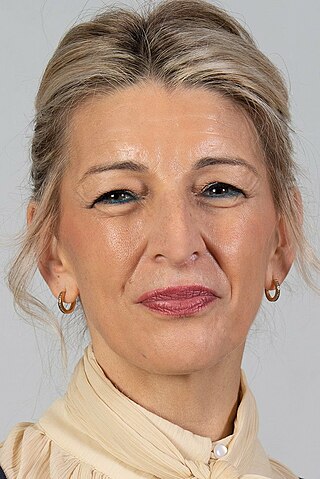
The second deputy prime minister of Spain, officially Second Vice President of the Government of Spain, is a senior member of the Government of Spain. The office of the Second Deputy Prime Minister is defined in the Constitution but is not a permanent position, existing only at the discretion of the Prime Minister.

The President of the Principality of Asturias ; Asturian: Presidente del Principáu d'Asturies) is the head of government of the Spanish autonomous community of Asturias. The president is chosen by the General Junta of the Principality of Asturias, autonomous parliamentary institution.
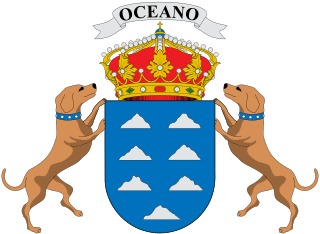
The president of the Canary Islands is the head of government of the Canary Islands, one of the 17 autonomous communities of Spain, while the monarch Felipe VI remains the head of state as king of Spain.

The Ministry of Territorial Policy and Democratic Memory (MPTMD), is the department of the Government of Spain which manages the policies of the government regarding relations and cooperation with the Autonomous Communities and with the entities that integrate the Local Administration and those related to the territorial organization of the country and with the Government Delegations and Sub-Delegations in the regions and provinces.
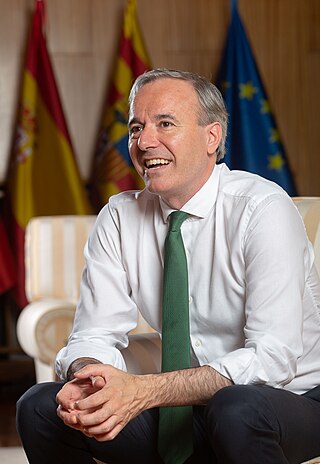
The president of the Government of Aragon, also known as the president of the General Deputation of Aragon or, simply, the president of Aragon, is the head of government of Aragon, an autonomous community in Spain. The President is elected to a four-year term by the Aragonese Corts.

The Chief of the Defence Staff is the highest-ranking military officer in the Spanish Armed Forces and is the principal military advisor to the Prime Minister, the Minister of Defence, the National Defence Council and the National Security Council. It is the fourth military authority of the country after the Monarch, the Prime Minister and the Minister of Defence because the Secretary of State for Defence and the Under-Secretary of Defence do not have military authority.
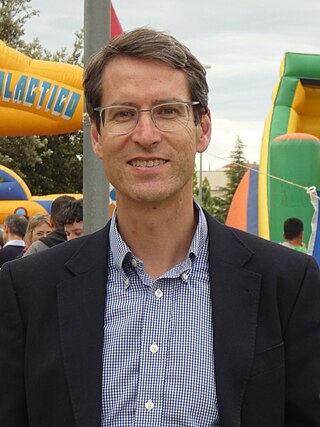
The president of La Rioja is the head of government of the Spanish autonomous community of La Rioja. The current incumbent is Gonzalo Capellán of the PP, who has held the office since 29 June 2023.

The president of the Junta of Castile and León is the executive head of government of the Spanish autonomous community of Castile and León. The president is the head of the Junta of Castile and León, or regional government.

The Mayor-President of the Autonomous City of Melilla or simply the President of Melilla, is the highest authority of the Spanish autonomous city of Melilla, acting as head of government and as presiding officer of the Assembly of Melilla.
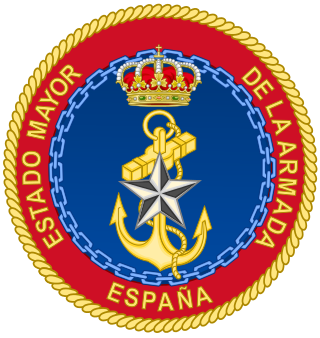
The Chief of Staff of the Navy or Admiral Chief of Staff of the Navy (AJEMA) is the highest-ranking military officer of the Spanish Navy that, under the authority of the Defence Minister, exercises command over the naval branch and, as such, is the principal military advisor to the Chief of the Defence Staff, the Minister of Defence, the Secretary of State for Defence, the Under-Secretary of Defence and the National Defence Council.

The Chief of Staff of the Air and Space Force (JEMAE) is a four-star general that under the authority of the defence minister exercises command over the Spanish Air and Space Force, and as such is the principal military advisor to the Chief of the Defence Staff, the Minister of Defence, the Secretary of State for Defence and the Under Secretary of Defence. It's also a member of the Council of Chiefs of Staff and a military advisor to the National Defence Council.

The Board of Joint Chiefs of Staff was the highest joint military command body of the Spanish Armed Forces that operated between 1977 and 2005. The Board, subject to the political dependence of the Prime Minister, constituted the highest collegiate body of the chain of military command of Army, the Navy and the Air Force. The Board consisted of a president, selected from among lieutenant generals or admirals of the three branches of the Armed Forces, their chiefs of staff and a secretary. The president had to belong to the Group of Arms Command or Group "A" and was also chief of the Defence High Command, until the dissolution of this body in 1980. The Board also had a General Headquarters, created in 1980 as a result of the dissolution of the Defence High Command, where the organs of aid to the command were integrated. Of the General Headquarters of the JUJEM they depended:
General of the Army(Spanish: General de Ejército), also called Army General, is a four-star general officer and the second highest possible rank in the Spanish Army. A General of the Army ranks immediately above a Lieutenant general and is equivalent to an Admiral General and a General of the Air. There is no equivalent in the Civil Guard or in the Spanish Navy Marines; in both cases the top rank is Lieutenant General.
General of the Air also called Air General, is a general officer and the second highest possible rank in the Spanish Air and Space Force. A General of the Air ranks immediately above a lieutenant general and is equivalent to a general of the army and an admiral general. There is not equivalent in the Civil Guard or in the Spanish Navy Marines; in both cases the top rank is Lieutenant general.
The Chief of the Joint Defence Staff (JEMACON) is a high-ranking military officer. The JEMACON is the closest assistant and advisor to the Chief of the Defence Staff and it is appointed by the Monarch at the request of the Minister of Defence.

Álvaro de Lacalle Leloup was a Spanish military officer who served as President of the Board of Joint Chiefs of Staff (Junta de Jefes de Estado Mayor, JUJEM) between 1982 and 1984, i.e., chief of staff of the Spanish Armed Forces at the time.
Felipe Galarza Sánchez was a Spanish military officer who served as Chief of the Defence High Command (Alto Estado Mayor, AEM), and as President of the Board of Joint Chiefs of Staff (Junta de Jefes de Estado Mayor, JUJEM) between 1977 and 1978. The offices he held made him chief of staff of the Spanish Armed Forces at the time.

The Ferrer-Dalmau Art and History Foundation (FFD), better known as the Ferrer-Dalmau Foundation, is a Spanish non-profit foundation founded on June 30, 2021 by the Spanish painter and academic Augusto Ferrer-Dalmau, known as the Painter of Battles. Its purpose is the dissemination, training and enhancement of the historical, artistic and cultural resources of Spain by carrying out activities such as workshops, exhibitions, forums, etc. To fulfill this task, different arts are used, such as painting, sculpture, architecture, literature, comics, music or cinema, among others.
Alfonso Pardo de Santayana y Coloma was a Spanish military officer who became General of the army and Chief of Staff of the Spanish Army (JEME).














